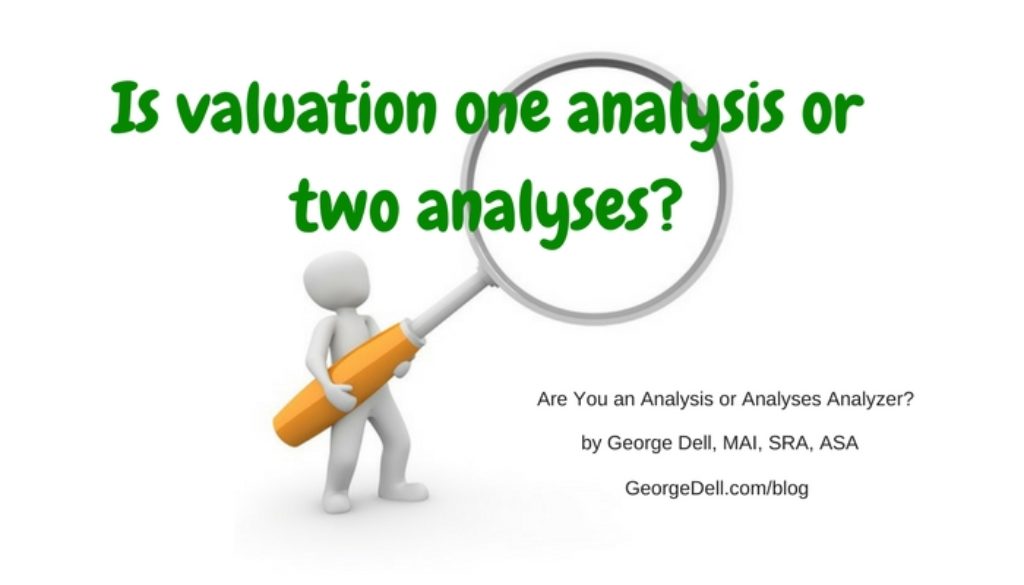Is valuation one analysis or two analyses?
Traditionally, we have been taught to pick our comps carefully. A comparable is competitive to the subject. A competitive sale is similar to the subject. And a property is similar if it can be compared to the subject. Is that one analysis, or two analyses?
From the 1930s to the 1960S this circular explanation was worked well. We picked comps because they were similar, and they were competitive because they could be compared. The fact that data was hard to get — made picking comps and adjusting comps a seamless analysis. Good judgment was king. If you picked good comps, your result was likely to be close. If you wanted to be a “conservative” appraiser, you picked comps to suit. Some appraisers worked hard to be known as conservative appraiser. Others did not. Still others claimed to be in the middle.
In the 1980s we started to learn of the importance of “market analysis.” Even to the 2000s, the literature said the market analysis supply and demand was to be based on the comparables we had selected. Seldom was the question asked: Which comes first, the comps or the market?
It seemed easy. If it’s similar, it’s competitive, it’s comparable – because it’s similar. A handful of comps was enough for any appraisal. More than a few was confusing, and made adjusting difficult.
Things have changed.
Today we have complete data in most markets. This is the secret to dramatically improving the result of an analysis. Actually two analyses! Once the valuer decides on a preliminary description of the subject, and sets a preliminary scope of work, the first step is not picking comps! The first analysis step is: identify the market. How is this so?
There are perhaps two ways to perceive a competitive market. One way (the traditional, sparse-data method), is to gather a few similar sales, then look at how they compete. Then form some idea of the demand/supply relationships. A traditional bottom-up approach. From a few sales, use inductive reasoning to perceive the whole market.
The other way is a data-driven, top down approach. More like whittling wood. Start with a block of wood, then carve away all the data which is does not look like your market. This is a key element of the data science viewpoint of analytics. In whittling to a market, it’s easy to cut away what is not. It’s not pretty to glue back, add on what you missed.
The objective of the first analysis is to identify the entire CMS© (competitive market segment©). Data science teaches us that more information always gives a better result. So long as you have whittled away what is not relevant data.
The second analysis step starts with the relevant data, the complete data frame. The process is predictive in nature. It does not involve inferential statistics in any way. It only requires adjusting or interpolating using three fairly simple tools. The point is that the tools and methods for selecting an ideal data set are different, very different from the tools and methods used for value prediction.
“Predictive models are predominant in most valuation settings.” The Appraisal of Real Estate, 13th ed., p.736-737.

April 11, 2018 @ 6:04 pm
Love the whittling example! As we work in remote, rural markets….I think this is the right mindset to have. Thank George and Cindy
April 12, 2018 @ 7:18 am
Great article